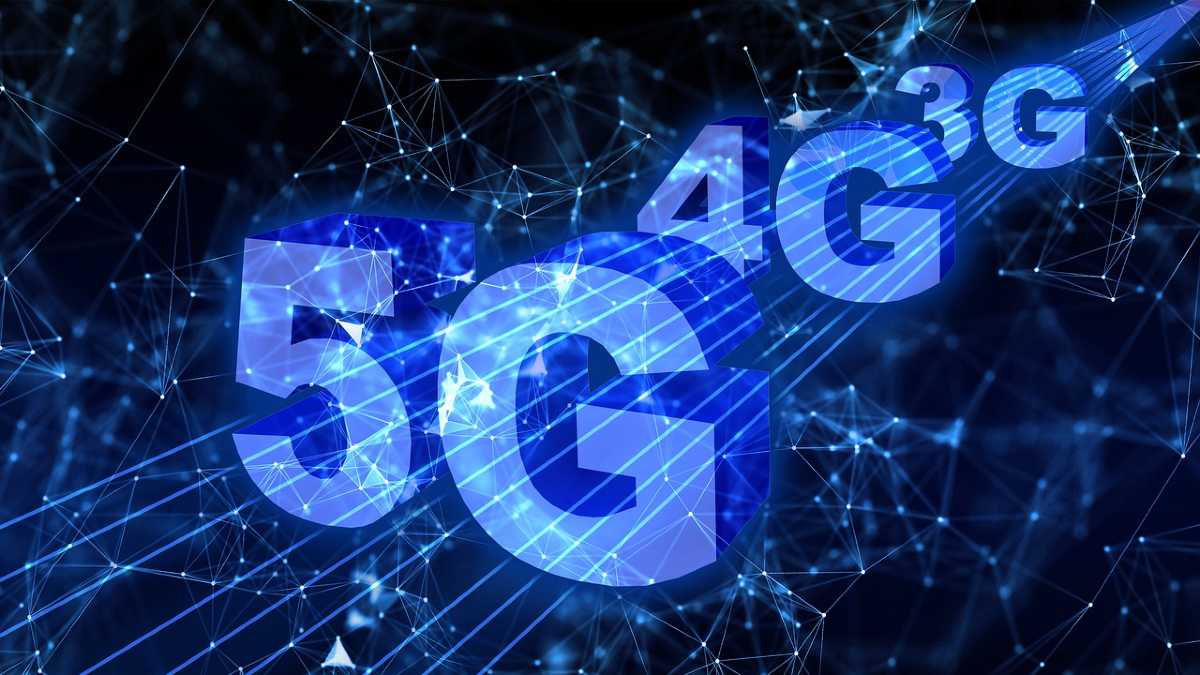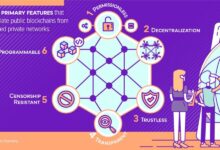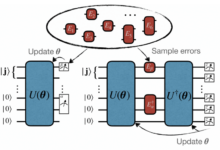5G Network Expansion A Global Transformation
5G network expansion is rapidly reshaping our world, promising unprecedented speeds, lower latency, and vastly increased bandwidth. This transformative technology is not just about faster downloads; it’s fueling a revolution across industries, from healthcare and manufacturing to transportation and entertainment. We’ll explore the economic benefits, technological advancements, societal impacts, and challenges associated with this global rollout, examining both the exciting possibilities and potential concerns.
The implications of 5G extend far beyond individual users. Its impact on economic growth, technological innovation, and social structures is profound and far-reaching. This exploration will delve into the complex interplay of technological progress, infrastructure development, regulatory frameworks, and the evolving global landscape of 5G deployment.
Economic Impacts of 5G Network Expansion
The rollout of 5G networks promises a significant boost to global economies, impacting various sectors and driving innovation in unprecedented ways. Its high speed and low latency capabilities unlock opportunities for increased productivity, new business models, and improved quality of life. This section will explore the multifaceted economic benefits of 5G adoption, examining projected returns on investment and comparing economic growth across regions with varying levels of 5G deployment.
Potential Economic Benefits of Widespread 5G Adoption
Widespread 5G adoption is expected to generate substantial economic benefits through increased productivity and efficiency across numerous sectors. Faster data speeds and lower latency enable real-time applications, automation, and improved data analysis, leading to cost savings and increased revenue streams for businesses. For example, the automotive industry can leverage 5G for autonomous vehicle development and traffic management systems, while the healthcare sector can utilize it for remote surgery and telemedicine, improving access to care and reducing costs.
The potential for new jobs in 5G-related industries, such as network infrastructure development and maintenance, application development, and data analytics, further contributes to the overall economic impact.
Projected Return on Investment for 5G Infrastructure Development
The return on investment (ROI) for 5G infrastructure development varies depending on factors such as deployment strategy, market conditions, and government support. However, numerous studies project significant long-term returns. For instance, a study by the GSMA Intelligence estimates that 5G will contribute trillions of dollars to the global economy by 2035, primarily through increased productivity and the creation of new services and industries.
The initial investment in infrastructure is substantial, but the long-term benefits, including increased tax revenue for governments and improved economic competitiveness for nations, are expected to outweigh the costs significantly. Successful deployments will likely see faster ROI in densely populated urban areas compared to more sparsely populated regions.
Economic Growth Potential in Regions with Varying Levels of 5G Deployment
Regions with robust 5G deployments are projected to experience faster economic growth compared to those with limited or no 5G infrastructure. Early adopters of 5G technology are expected to gain a competitive advantage in attracting investment, fostering innovation, and creating high-skilled jobs. For example, South Korea, a leader in 5G deployment, has seen a significant boost in its digital economy, driven by increased productivity and the emergence of new 5G-enabled services.
Conversely, regions with slower 5G rollout may experience a lag in economic growth and face challenges in competing with more advanced economies. This disparity highlights the importance of timely and efficient 5G infrastructure development.
Industries Significantly Impacted by 5G Network Expansion
The transformative potential of 5G technology is impacting various industries, leading to significant changes in their operations and business models.
| Industry | Impact | Projected Growth (%) | Potential Challenges |
|---|---|---|---|
| Manufacturing | Increased automation, improved efficiency, real-time monitoring of production processes | 15-20% (by 2030) | High initial investment costs, cybersecurity concerns |
| Healthcare | Remote surgery, telemedicine, improved diagnostics, better patient monitoring | 10-15% (by 2030) | Data privacy and security concerns, regulatory hurdles |
| Transportation | Autonomous vehicles, smart traffic management systems, improved logistics | 20-25% (by 2030) | Infrastructure development costs, safety concerns |
| Agriculture | Precision farming, remote monitoring of crops, improved resource management | 8-12% (by 2030) | Digital literacy among farmers, uneven access to technology |
Technological Advancements Driven by 5G
- G represents a significant leap forward in mobile network technology, enabling a range of previously unimaginable applications and services. Its advancements stem from improvements in several key areas, leading to dramatically increased speeds, reduced latency, and greatly expanded network capacity. This allows for a new era of connected devices and experiences.
- G’s enhanced capabilities are the result of several technological breakthroughs. These include the use of higher frequency bands (millimeter wave), improved antenna technologies (massive MIMO), and network slicing, allowing for the efficient allocation of resources to different applications. These advancements work together to deliver a superior mobile experience.
Improvements in Speed, Latency, and Bandwidth
G offers substantial improvements over its predecessor, 4G LTE, in terms of speed, latency, and bandwidth. Peak data rates in 5G networks are significantly higher, reaching several gigabits per second (Gbps) compared to the hundreds of megabits per second (Mbps) achievable with 4G. This translates to faster downloads, smoother streaming, and quicker response times. Furthermore, 5G boasts significantly lower latency – the delay between sending a request and receiving a response – typically in the range of milliseconds compared to tens of milliseconds in 4G.
This low latency is crucial for real-time applications. Finally, 5G’s increased bandwidth allows for a substantially larger number of connected devices to operate simultaneously without compromising performance.
Innovative Applications Enabled by 5G
The enhanced speed, low latency, and high bandwidth of 5G are enabling a wave of innovative applications across various sectors. The Internet of Things (IoT) is experiencing a massive boost, with billions of connected devices exchanging data seamlessly. This includes smart homes, wearables, industrial sensors, and smart city infrastructure. Artificial intelligence (AI) also benefits significantly from 5G’s capabilities, enabling faster processing and analysis of large datasets for applications like real-time image recognition and predictive maintenance.
Furthermore, the development of autonomous vehicles is heavily reliant on 5G’s ultra-low latency and high reliability for safe and efficient operation. Remote surgery, enhanced augmented reality experiences, and high-definition video streaming are also becoming realities thanks to 5G.
Comparison of 4G and 5G Network Characteristics
| Characteristic | 4G LTE | 5G |
|---|---|---|
| Peak Download Speed | Up to 1 Gbps | Up to 20 Gbps (theoretical maximum) |
| Latency | 50-100 milliseconds | 1-10 milliseconds |
| Network Capacity | Relatively lower | Significantly higher |
| Applications | Basic web browsing, streaming, social media | IoT, AI, autonomous vehicles, remote surgery, AR/VR, high-definition streaming |
Social and Cultural Impacts of 5G
The expansion of 5G networks promises a profound reshaping of our social and cultural landscapes. Beyond the technological advancements, the increased connectivity afforded by 5G will influence how we interact, communicate, and access information, leading to both opportunities and challenges. Understanding these potential impacts is crucial for navigating this technological shift effectively.G’s enhanced speed and low latency will fundamentally alter our daily lives, impacting everything from entertainment and education to healthcare and social interaction.
The implications are far-reaching and require careful consideration of both the potential benefits and drawbacks.
Changes in Communication and Social Interaction
The near-instantaneous communication facilitated by 5G will likely lead to a further blurring of the lines between our physical and digital lives. Real-time interactions, immersive gaming experiences, and the expansion of virtual and augmented reality applications will transform how we connect with others, both locally and globally. For example, remote collaboration tools will become even more sophisticated, enabling seamless teamwork across geographical boundaries.
Conversely, the potential for increased social isolation and a dependence on digital interactions needs careful monitoring. The rise of hyper-realistic virtual worlds could also lead to a diminished sense of community within physical spaces.
Impact on Access to Information and Digital Literacy
G’s high bandwidth capabilities will significantly improve access to information, particularly in underserved areas. This increased accessibility has the potential to bridge the digital divide, empowering individuals with greater opportunities for education, employment, and civic engagement. However, this improved access also highlights the critical need for enhanced digital literacy programs. Without adequate training and support, the benefits of 5G connectivity may not be equally distributed, potentially exacerbating existing inequalities.
For instance, initiatives focused on teaching older generations how to use 5G-enabled devices and online resources will be crucial in ensuring equitable access to information.
Impact on Various Demographics
The societal impacts of 5G will vary significantly across different demographics. It’s important to consider these varying impacts to ensure equitable benefits and mitigate potential negative consequences.
- Elderly Individuals: 5G can improve access to telehealth services, reducing the need for frequent hospital visits. However, digital literacy training is crucial to ensure they can effectively utilize these services.
- Children and Youth: Increased access to educational resources and immersive learning experiences can benefit children. However, safeguarding them from online risks and promoting responsible digital citizenship is paramount.
- Low-Income Communities: 5G can bridge the digital divide, offering access to jobs, education, and healthcare. However, ensuring affordability and accessibility of 5G services in these communities is vital.
- People with Disabilities: 5G can improve access to assistive technologies and remote support services. However, ensuring that these technologies are inclusive and accessible to individuals with a wide range of disabilities is crucial.
- Rural Communities: 5G can bring high-speed internet access to previously underserved areas, fostering economic development and improving quality of life. However, infrastructure investment and addressing potential coverage gaps are essential.
Infrastructure Challenges in 5G Deployment: 5G Network Expansion
Rolling out a nationwide 5G network presents a complex web of challenges, demanding significant investment and meticulous planning. These hurdles span geographical limitations, substantial financial requirements, regulatory complexities, and technological considerations. Successfully navigating these obstacles is crucial for realizing the full potential of 5G technology.The deployment of 5G infrastructure faces numerous significant obstacles. These obstacles vary depending on the location and the chosen deployment strategy, creating a complex landscape for network operators.
Geographical Limitations and Cost Factors
The cost of building and maintaining 5G infrastructure is a major barrier, particularly in geographically challenging areas. Rural areas often require more extensive infrastructure due to lower population density, leading to higher costs per subscriber. The need for extensive fiber optic cable backhaul in remote locations adds significantly to the expense. Moreover, deploying 5G in mountainous or heavily forested regions presents unique engineering difficulties and increased costs associated with site acquisition and construction.
5G network expansion is crucial for handling the massive data demands of the future, especially in areas like AI. However, even with faster networks, we’re still limited by the computational power available, which is why understanding the intricacies of quantum computing is so important. Check out this article on Exploring the limitations and challenges of current quantum AI algorithms to see how it might impact future 5G applications and the overall speed of data processing.
In contrast, urban deployments benefit from existing infrastructure and higher population density, leading to lower costs per subscriber, although navigating city permits and right-of-way access can still pose significant challenges. For example, a recent study by the FCC estimated that deploying 5G in rural areas could cost up to 10 times more than in urban areas due to the need for more cell towers and longer backhaul connections.
Comparison of 5G Deployment Strategies and Their Challenges
Different 5G deployment strategies, such as macrocells, small cells, and mmWave deployments, each present unique challenges. Macrocells, while offering wide coverage, may struggle to provide the high capacity and low latency required for certain 5G applications. Small cells, on the other hand, offer higher capacity and lower latency but require more frequent deployments and can be costly to install and maintain.
Deploying mmWave technology, which offers extremely high bandwidth, faces limitations in terms of range and penetration, making it more suitable for dense urban environments rather than rural areas. The challenge lies in finding the optimal balance between coverage, capacity, and cost for each specific deployment scenario. For instance, a city might employ a mix of macrocells and small cells, while a rural area might primarily rely on macrocells supplemented by strategically placed small cells in populated areas.
Regulatory Hurdles and Licensing Requirements
Securing the necessary licenses and permits for 5G deployment involves navigating a complex regulatory landscape that varies across different countries and regions. Frequency allocation, spectrum licensing, and environmental impact assessments are just some of the regulatory hurdles that operators must overcome. The process can be time-consuming and expensive, delaying the rollout of 5G networks. In some countries, the availability of suitable spectrum for 5G is limited, leading to fierce competition and high licensing costs.
Additionally, harmonizing regulations across borders is crucial for seamless cross-border 5G connectivity, but achieving this is often challenging due to differing national policies and priorities. The regulatory environment significantly influences the speed and efficiency of 5G deployment.
Challenges in Deploying 5G in Rural Areas Versus Urban Centers
Imagine two contrasting scenarios: Urban Center: A dense network of existing fiber optic cables, readily available power sources, and a high concentration of potential subscribers. However, navigating complex city planning regulations, securing permits for tower installations, and managing the logistical challenges of deploying infrastructure in a densely populated area can be difficult. Rural Area: Sparse population density necessitates wider coverage with fewer subscribers per tower, increasing the cost per subscriber.
5G network expansion is dramatically increasing data speeds, paving the way for advancements in AI. However, the sheer volume of data necessitates exploring more powerful computing solutions, which is where understanding the complexities of quantum computing comes in. Check out this article on Understanding the quantum supremacy debate in the context of AI to see how it could impact future 5G infrastructure and applications.
Ultimately, faster networks will fuel the need for, and benefit from, quantum leaps in processing power.
Limited existing infrastructure, lack of reliable power sources, and difficulties in obtaining necessary permits for tower installations in remote locations pose significant obstacles. Long distances to fiber optic backhaul infrastructure add considerable expense and complexity. The cost of maintenance and repair is also higher due to the geographic isolation of these sites.
Security and Privacy Concerns Related to 5G

Source: tvyvideo.com
The expansion of 5G networks, while offering significant advancements in speed and connectivity, also introduces new security and privacy challenges. The increased data volume, higher speeds, and the interconnected nature of 5G systems create vulnerabilities that require careful consideration and proactive mitigation strategies. This section explores these concerns and potential solutions.The inherent complexity of 5G architecture, with its reliance on numerous interconnected devices and network elements, presents a larger attack surface than previous generations of mobile networks.
5G network expansion is dramatically increasing data speeds, paving the way for more complex AI applications. Understanding the performance differences is crucial, and a great resource for that is this article on Comparing classical AI and quantum AI performance in specific tasks. This knowledge will help us optimize the use of 5G’s capabilities for future AI advancements, ensuring we leverage the network’s potential effectively.
This complexity increases the potential for vulnerabilities to be exploited, leading to data breaches, service disruptions, and other security incidents. Furthermore, the massive increase in data transmission associated with 5G necessitates robust security measures to protect sensitive user information.
Potential Security Vulnerabilities in 5G Networks
G networks face a range of potential security threats, including unauthorized access to network infrastructure, denial-of-service attacks, and sophisticated malware targeting network components or user devices. For example, a compromised base station could allow attackers to intercept communications or inject malicious code into the network. Similarly, vulnerabilities in network management systems could enable attackers to gain control over the network’s operations.
The use of software-defined networking (SDN) and network function virtualization (NFV) in 5G also introduces new security challenges, requiring robust security mechanisms to protect these virtualized network functions. Furthermore, the increasing reliance on edge computing in 5G brings its own security concerns, as sensitive data processing occurs closer to the user, potentially increasing the risk of data breaches.
Privacy Implications of Increased Data Collection and Transmission
The enhanced capabilities of 5G facilitate the collection and transmission of vast amounts of user data, raising significant privacy concerns. This includes location data, browsing history, communication content, and other personal information. The potential for this data to be misused or exploited for surveillance or targeted advertising is a major concern. For instance, detailed location tracking enabled by 5G could be used to create highly detailed profiles of individuals, potentially violating their privacy.
Moreover, the increased use of artificial intelligence (AI) and machine learning (ML) in 5G networks could lead to more sophisticated forms of data analysis, further enhancing the potential for privacy violations. The lack of transparency and control over data collection and usage practices also contributes to privacy concerns.
Methods for Mitigating Security Risks and Protecting User Privacy in 5G Environments
Several strategies can be implemented to mitigate security risks and protect user privacy in 5G networks. These include employing strong authentication and authorization mechanisms, implementing robust encryption protocols, and utilizing advanced security technologies such as intrusion detection and prevention systems. Regular security audits and vulnerability assessments are also crucial to identify and address potential weaknesses. Furthermore, promoting data minimization principles, ensuring user consent for data collection, and implementing transparent data usage policies are essential for protecting user privacy.
5G network expansion is crucial for handling the massive data demands of the future. This is especially true considering the advancements in artificial intelligence, particularly with the potential breakthroughs discussed in The future of quantum AI in artificial general intelligence research. Such progress will require incredibly fast and reliable networks, making continued 5G rollout even more vital for technological progress.
The development and implementation of privacy-enhancing technologies, such as differential privacy and federated learning, can also help to mitigate privacy risks while still enabling valuable data analysis.
Importance of Robust Security Protocols and Data Encryption in 5G Networks, 5G network expansion
Robust security protocols and data encryption are paramount for ensuring the security and privacy of 5G networks. End-to-end encryption, for example, protects data in transit and at rest, preventing unauthorized access even if a network component is compromised. The use of strong cryptographic algorithms and key management systems is essential for securing communication channels and protecting sensitive data.
Furthermore, the implementation of secure boot processes and software updates helps to prevent malicious code from being loaded onto network devices. The adoption of standardized security protocols and best practices across the 5G ecosystem is crucial to minimize vulnerabilities and enhance overall security. For example, the 3GPP (3rd Generation Partnership Project) has defined various security specifications for 5G networks, including security architecture, authentication, and key management.
Adherence to these standards is critical for building secure and reliable 5G infrastructure.
International 5G Development and Competition
The global rollout of 5G networks has been a complex and uneven process, shaped by a confluence of technological advancements, economic factors, and geopolitical considerations. Different nations have adopted varying approaches, resulting in a diverse landscape of deployment speeds, infrastructure investments, and market leadership. This section examines the international competition in 5G development, highlighting key players, their strategies, and the geopolitical implications of this rapidly evolving technology.The pace of 5G deployment varies significantly across countries and regions.
Early adopters, primarily in developed nations, have made substantial progress in building out their 5G infrastructure, while developing countries face significant hurdles in deploying the technology. This disparity is largely due to factors such as economic resources, regulatory environments, and the availability of skilled labor. The competition between nations to become 5G leaders is intense, with significant implications for economic growth, technological innovation, and international influence.
Key Players and Their Strategies in the Global 5G Market
Several key players dominate the global 5G market, each pursuing distinct strategies to gain a competitive edge. These include major telecommunications companies, network equipment manufacturers, and technology giants. For example, companies like Huawei, Ericsson, and Nokia are major players in the supply of network equipment, while companies like Verizon, AT&T, and T-Mobile are heavily invested in building 5G networks in their respective regions.
Their strategies encompass aggressive investments in infrastructure, partnerships with other companies, and development of innovative 5G applications. Furthermore, government policies play a crucial role, influencing deployment strategies through subsidies, spectrum allocation, and regulatory frameworks. The resulting competition is driving innovation and accelerating the development of 5G technology worldwide.
Geopolitical Implications of 5G Technology
The deployment of 5G networks has significant geopolitical implications. The technology’s potential to transform various sectors, including defense, intelligence, and critical infrastructure, has heightened concerns about national security and data sovereignty. The competition between nations, particularly the US and China, for 5G dominance reflects broader geopolitical rivalries and concerns over technological dependence. Security concerns surrounding the use of equipment from certain vendors have led to restrictions and bans in some countries, further complicating the global landscape.
These concerns highlight the intertwining of technological advancement and international relations, creating a complex interplay of economic interests, security priorities, and political alliances.
5G Deployment Progress in Selected Countries
The following table summarizes the 5G deployment progress in four different countries, highlighting key players, challenges, and timelines. These examples illustrate the diverse approaches and challenges involved in global 5G rollout. It’s important to note that timelines and progress are subject to change.
| Country | Key Players | Challenges | Timeline (Approximate) |
|---|---|---|---|
| United States | Verizon, AT&T, T-Mobile, Qualcomm | High deployment costs, spectrum allocation complexities, regulatory hurdles | Significant rollout began in 2019, ongoing expansion |
| China | China Mobile, China Unicom, China Telecom, Huawei | Balancing security concerns with domestic technology development, rural deployment | Rapid expansion began in 2019, significant coverage achieved |
| South Korea | SK Telecom, KT, LG Uplus, Samsung | Maintaining high speeds and capacity in densely populated areas | Early and rapid adoption, among the global leaders in 5G coverage |
| India | Reliance Jio, Airtel, Vodafone Idea, Ericsson, Nokia | Vast geographical area, infrastructure limitations, affordability | Rollout initiated in 2020, facing challenges in achieving widespread coverage |
Wrap-Up
The expansion of 5G networks presents a double-edged sword. While the potential benefits are immense—from boosting economic productivity to fostering innovation and improving quality of life—significant challenges remain in terms of infrastructure deployment, security concerns, and equitable access. Addressing these challenges effectively will be crucial to realizing the full potential of 5G and ensuring a future where this transformative technology benefits all of society.
FAQ Overview
What are the health concerns surrounding 5G?
Extensive research has found no evidence that 5G poses a health risk. The radio frequencies used are non-ionizing and emit low levels of radiation, significantly lower than those from other everyday sources.
How will 5G impact the environment?
The increased energy consumption of 5G infrastructure is a concern. However, advancements in energy-efficient technologies and network optimization are being developed to mitigate this impact.
Will 5G replace 4G completely?
No, 5G and 4G will likely coexist for some time. 4G will continue to serve as a foundational network, especially in areas with limited 5G coverage.
What are the job opportunities created by 5G?
5G expansion creates jobs in infrastructure development, network engineering, software development, and various related industries, driving innovation and economic growth.









